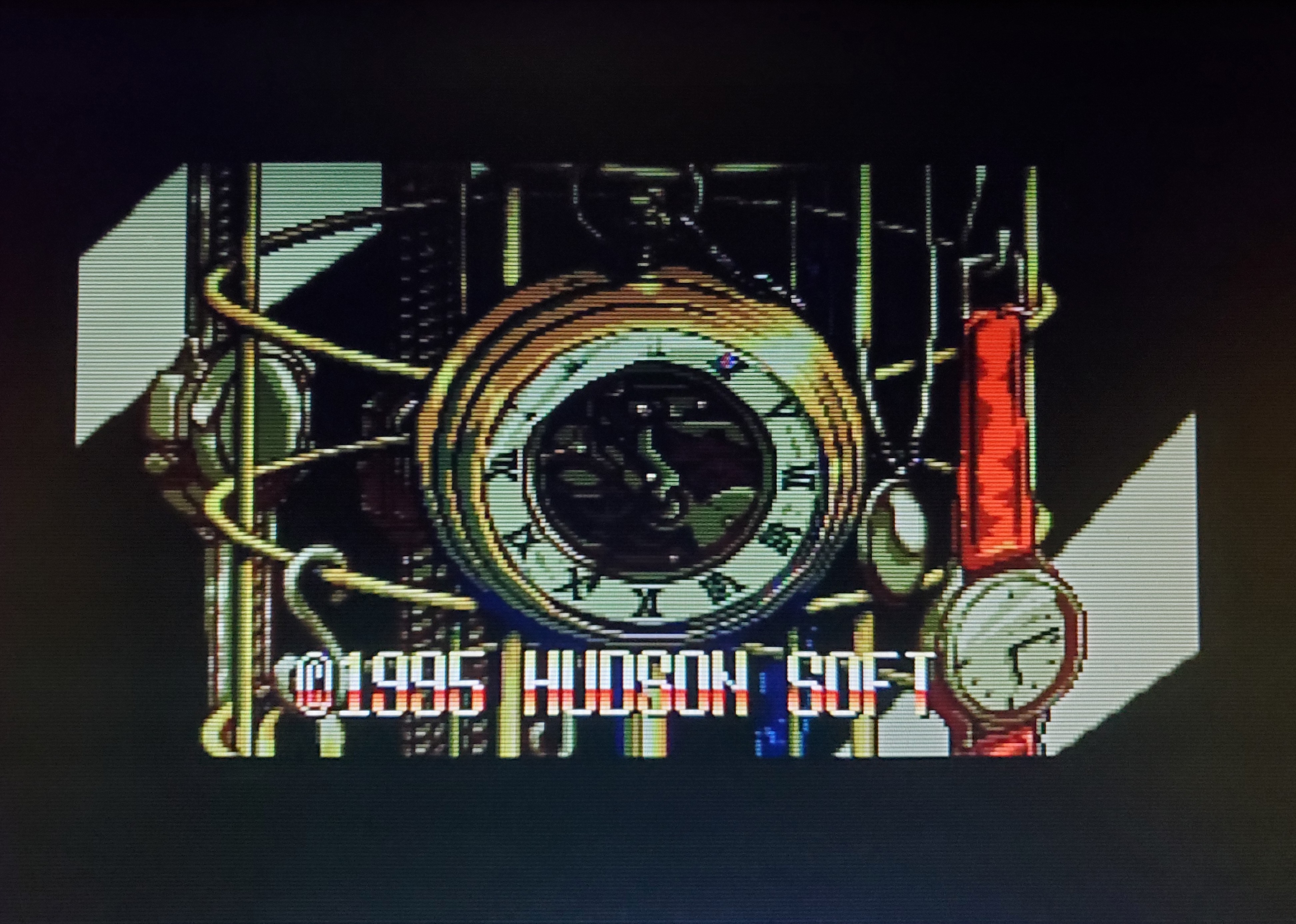
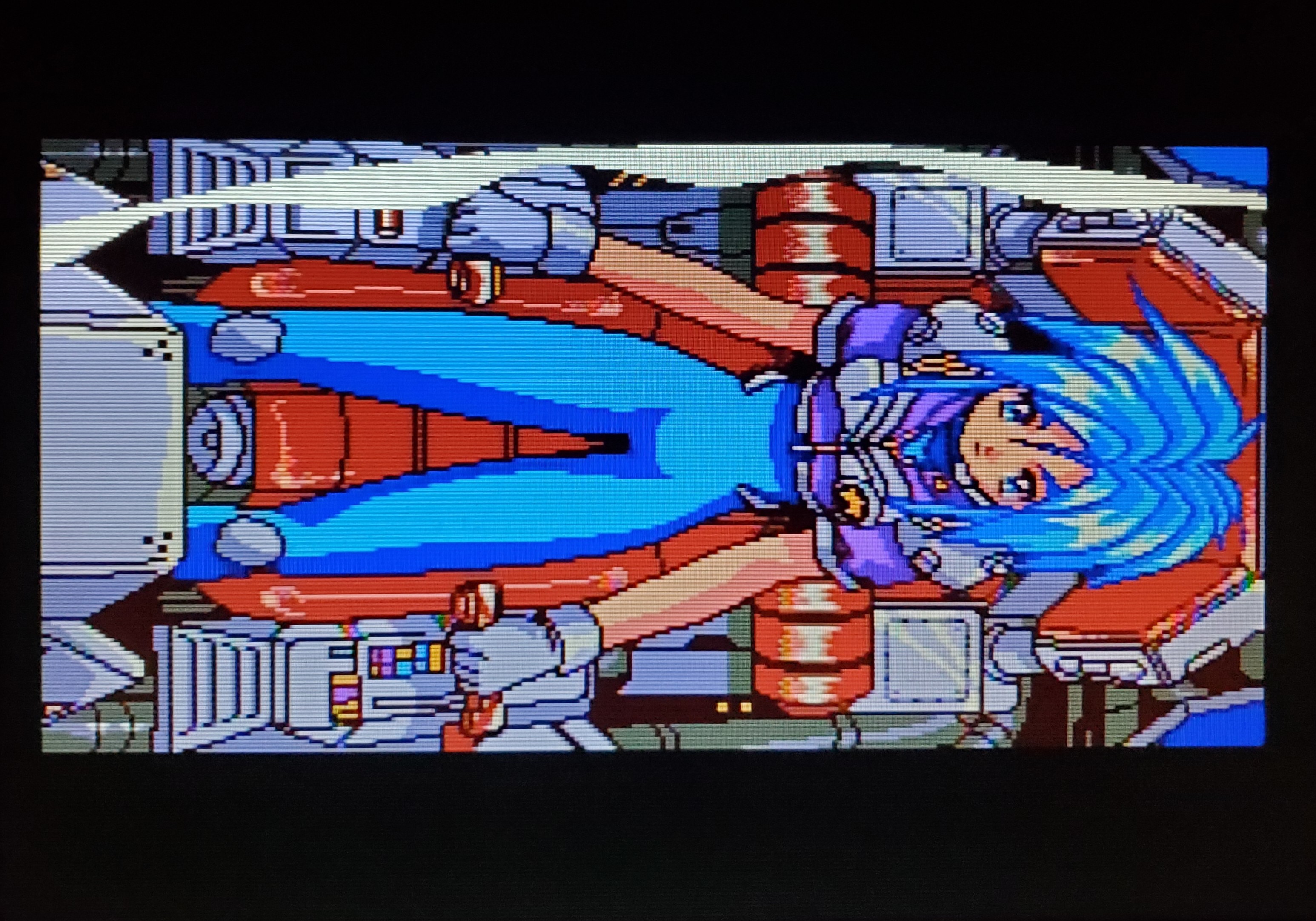
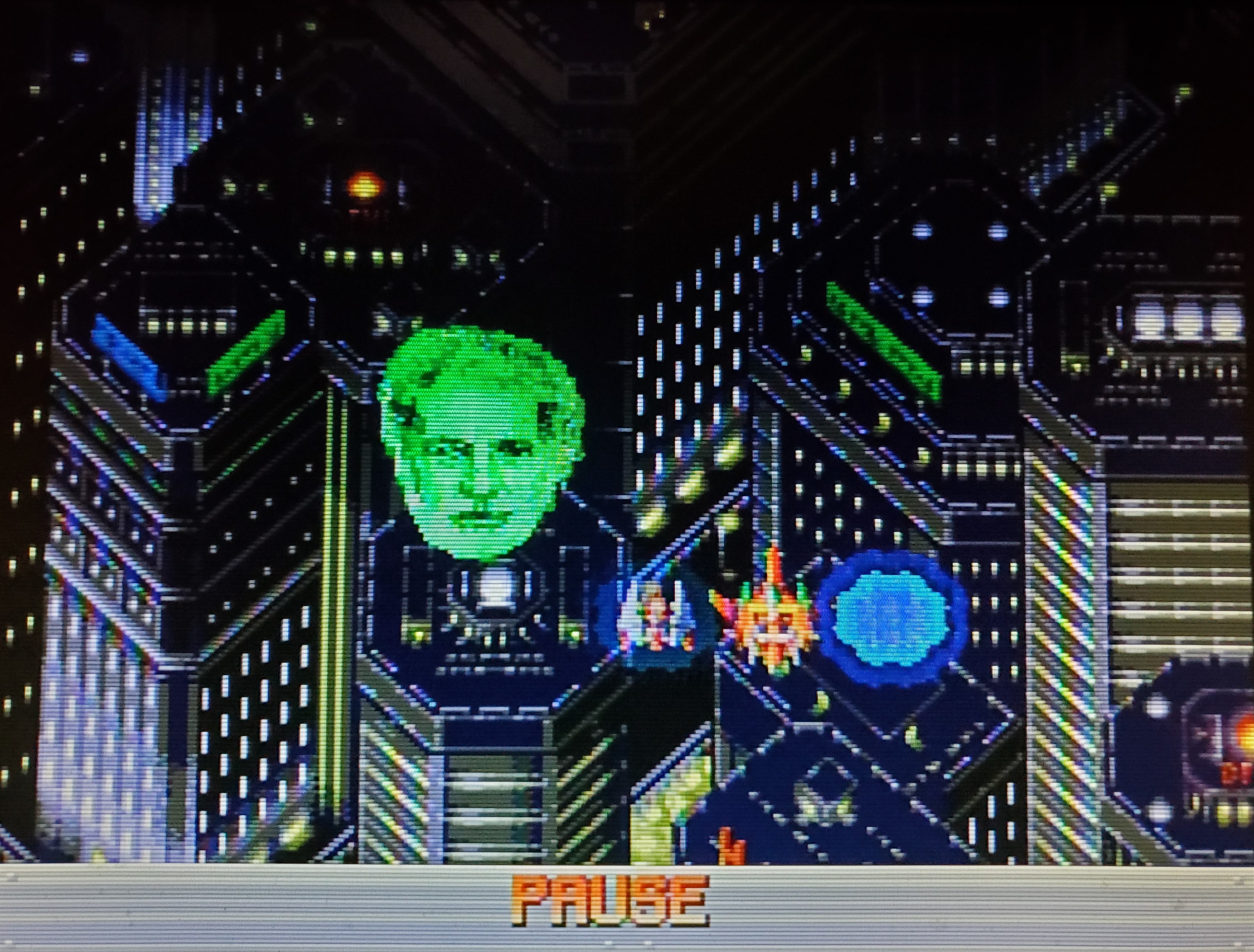
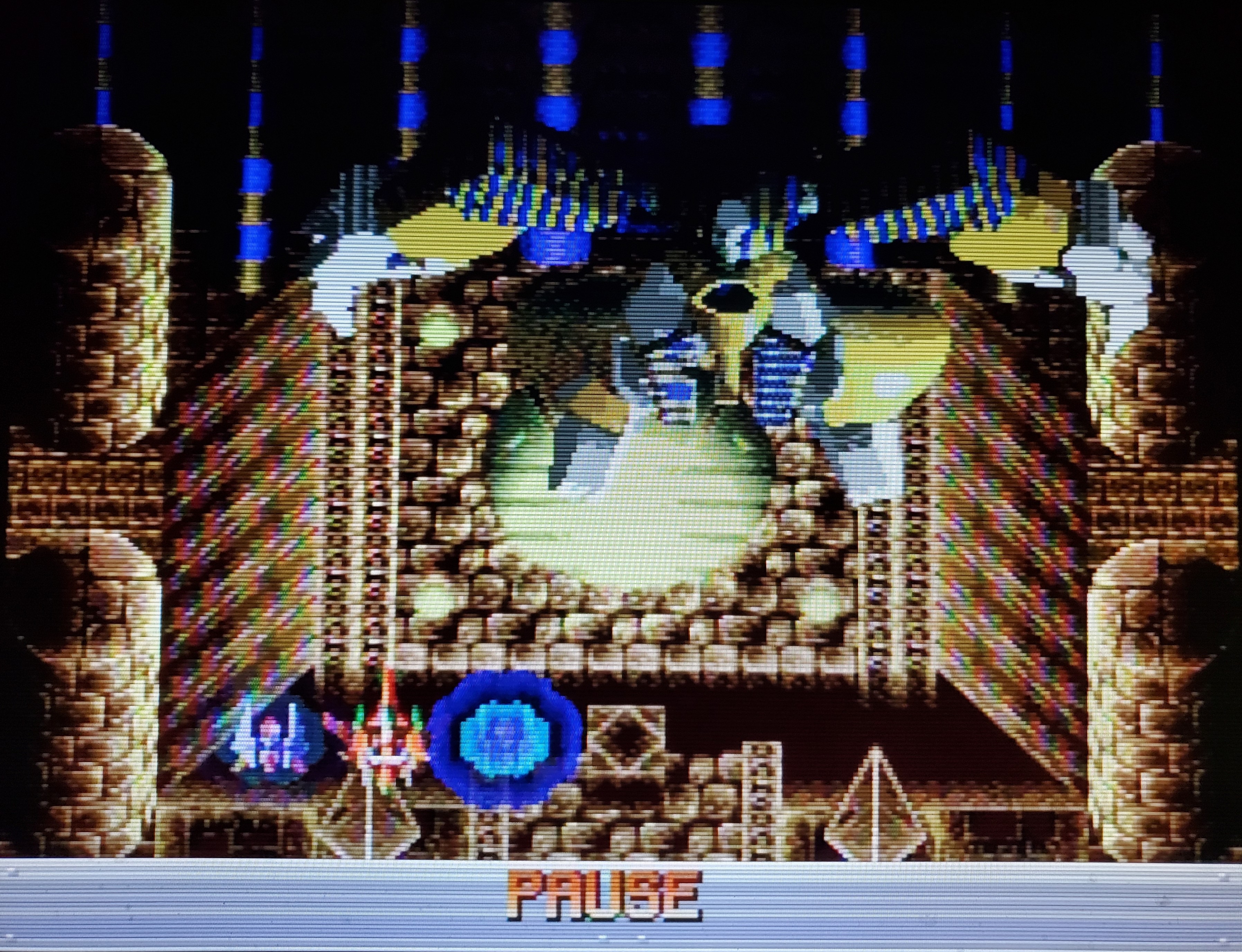
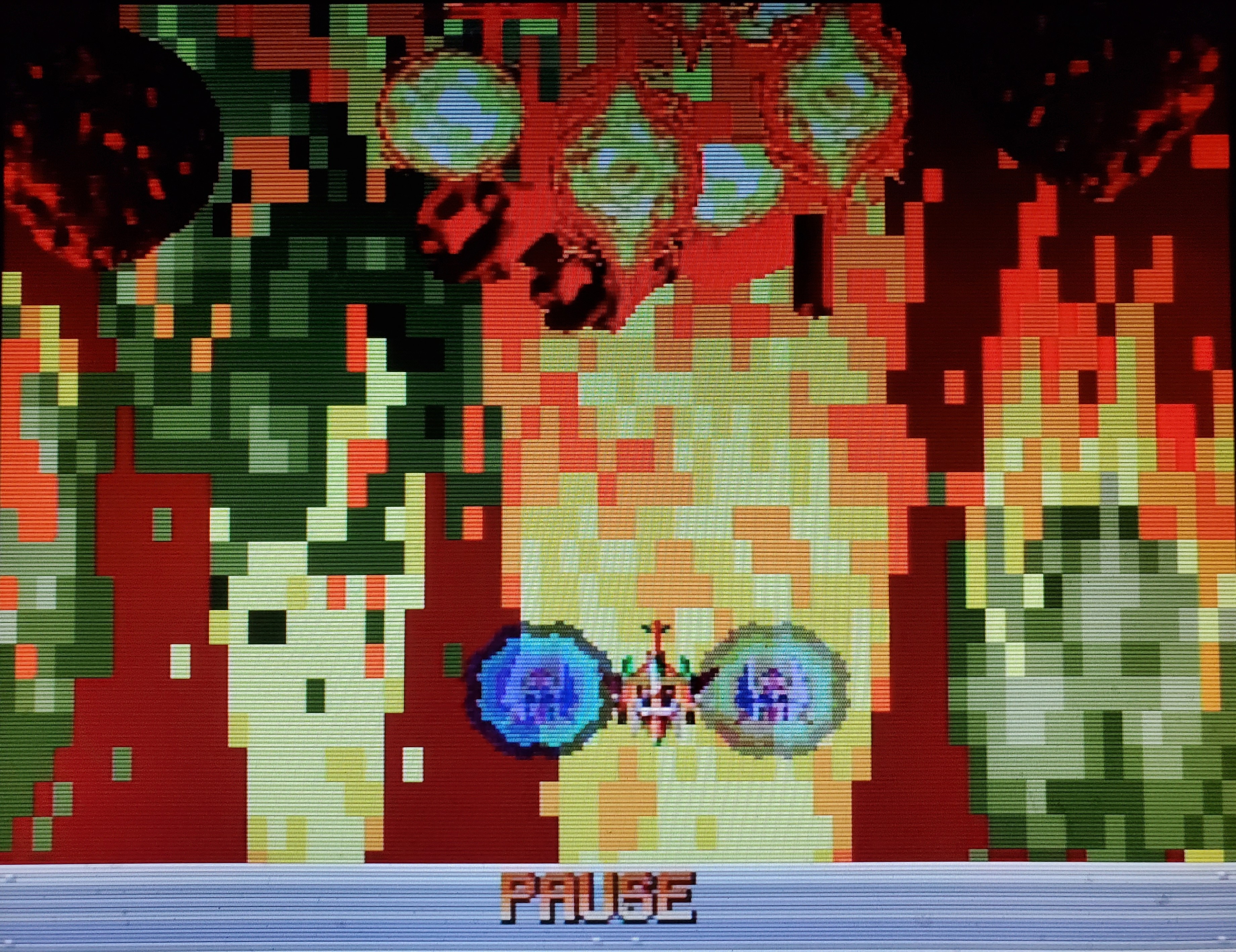
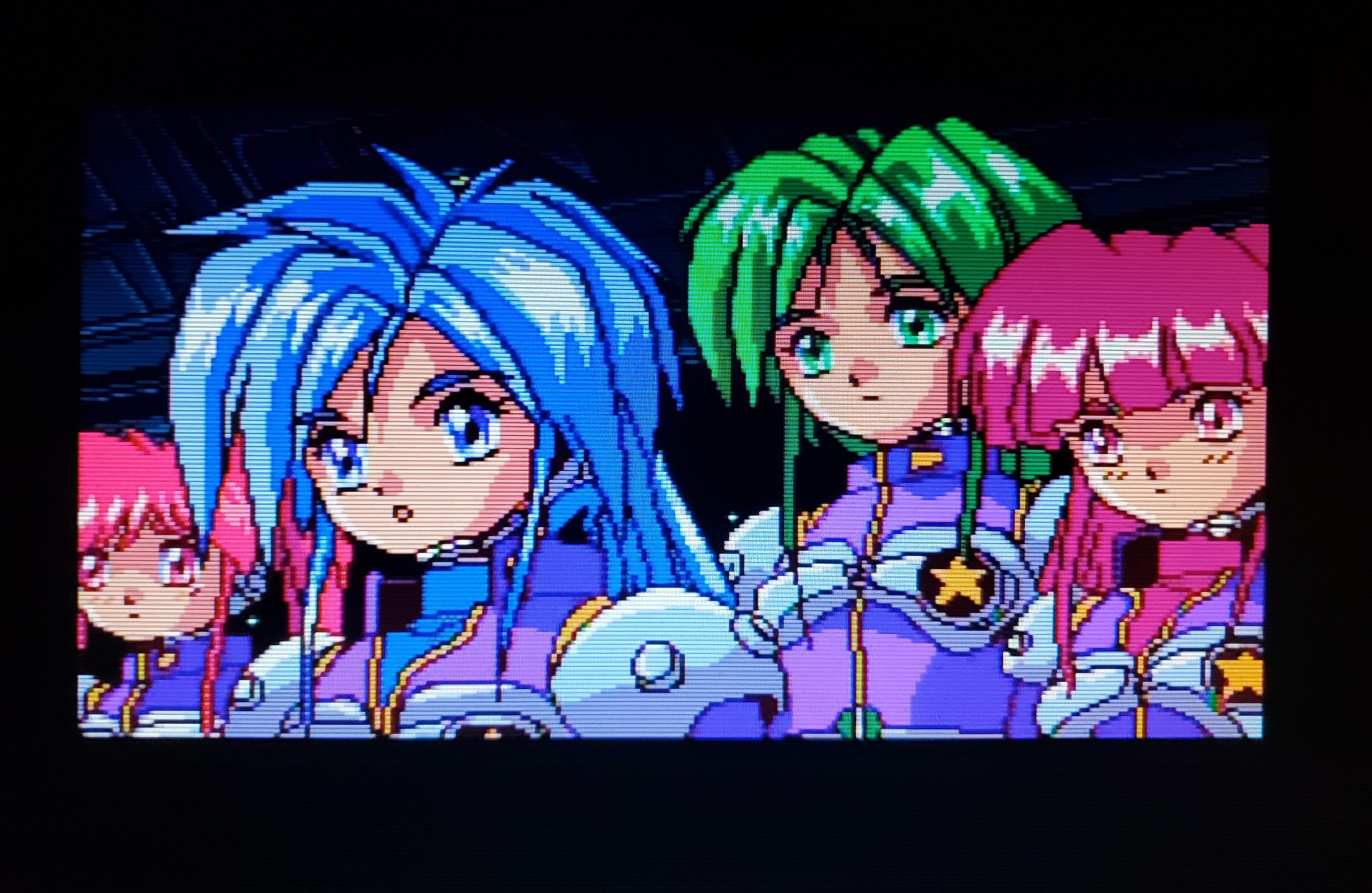
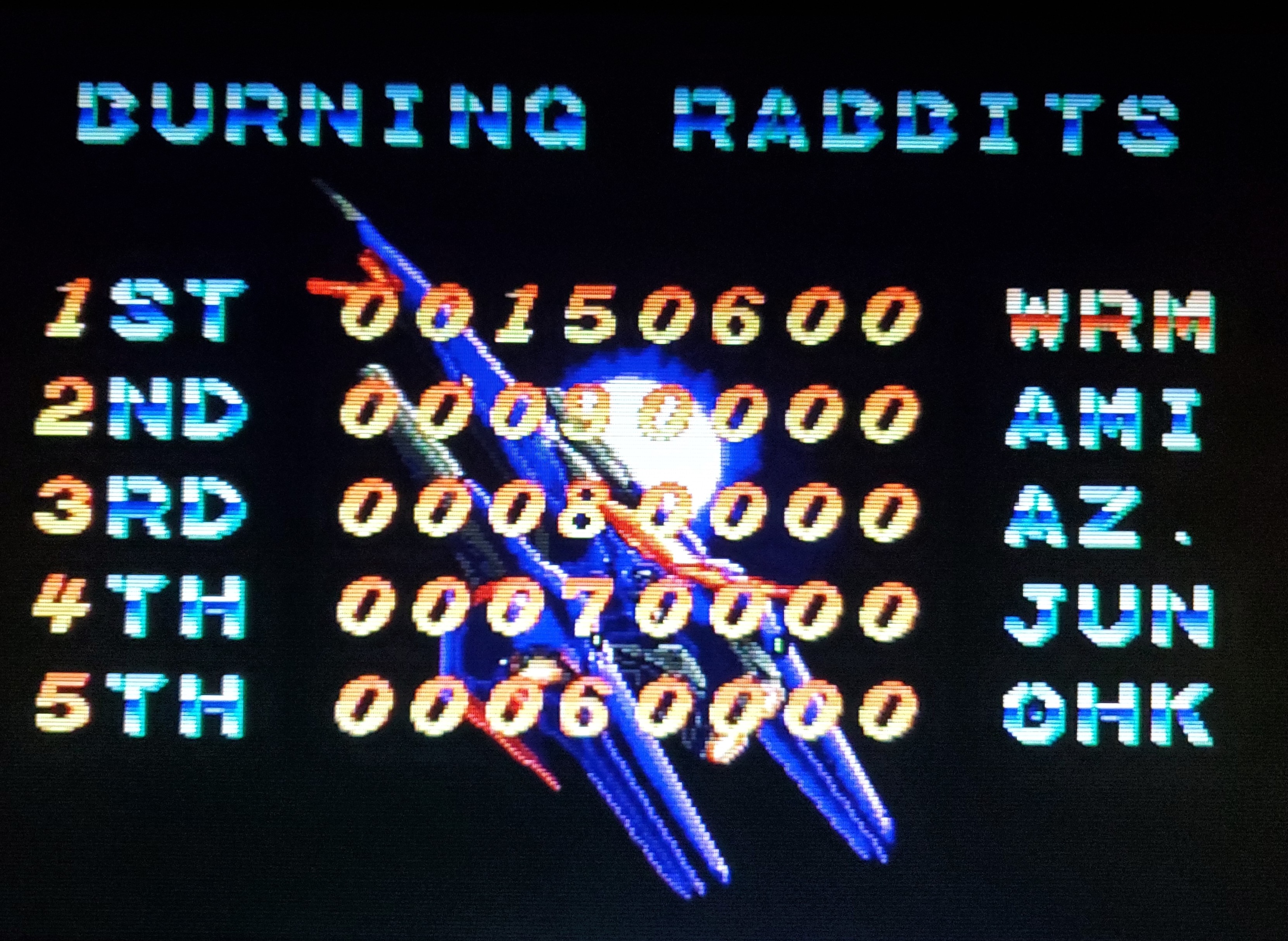
Who’s up for another ultra-rare sticker shock shooter? I already covered Magical Chase, the single priciest regular retail release for the PC Engine/TurboGrafx-16. The next logical choice would have to be Ginga Fukei Densetsu Sapphire (“Galaxy Policewoman Legend Sapphire”), the platform’s most expensive CD-ROM. How much dough are we talking? Well, an authentic copy of this 1995 Japanese exclusive will run you between U.S. $400 and $1000 as of this writing, depending on condition and completeness. Or you could do what I did and look into, let’s say, “alternative methods” of running CD games on your console. No judgement here!
Sapphire is one of the mere dozen titles built around the Arcade Card, the last and most advanced of the three system expansion cards produced for the PC Engine’s CD-ROM add-on. The Arcade Card’s added memory allowed developer CAProduction and publisher Hudson Soft to incorporate flashy pseudo-3D visual gimmicks on a scale never seen before on the aging machine. These aren’t the same polygonal 3D models next generation contemporaries like the PlayStation and Saturn used. Rather, the effect is cleverly faked through the use of sprites patterned on prerendered 3D assets. Similar techniques were used to give Nintendo’s Donkey Kong Country and Sega’s Vectorman their signature looks. Assuming that Hudson Soft’s primary goal was to shock and amaze, they certainly nailed it. Getting something this busy running on what’s technically an 8-bit CPU from 1987 was quite the coup, and a hard rocking soundtrack by T’s Music (of Lords of Thunder fame) only adds to the sensory overload of it all.
Having now duly established Sapphire as one of the best looking and sounding PC Engine games ever made, how does it fare as a shooter? Eh. Okay, I guess. Decent enough. It has most of the vertical shooting fundamentals down, but the combination of frustratingly slow ship speeds and a limited campaign ensures that it ultimately can’t hold a candle to such true greats as Blazing Lazers, Seirei Senshi Spriggan, Nexzr, and the Star Soldier series.
In terms of story, Sapphire is about a quartet of hotshot space cops from the year 2092 (Charlotte, Helena, Jasmine, and the titular Sapphire) traveling through time to prevent terrorists from doing nefarious things in the past. This explains why you can be blasting through a Blade Runner-esque futuristic cityscape one minute and a medieval castle the next. Each of the four playable heroes has her own unique ship and complement of three upgradeable special weapons. This provides some much-needed replay value and permits two players to partake in the action side-by-side. That latter feature is a major plus, as two-player simultaneous shooting was surprisingly rare on the PC Engine.
Welcome as the multiple characters are, they could have been better implemented. The main issue is that Helene and Jasmine’s ships were made achingly slow-moving as a way to balance out their more damaging weapons. In theory, this could work. In practice, it leaves them almost wholly unable to dodge enemy fire reactively, leading to a heavy emphasis on the rote memorization of patterns. Frankly, I found it obnoxious. Even Sapphire, who’s supposed to be the default, well-rounded choice, is pretty dang pokey by genre standards. Of course, there are no speed boost power-ups available to offset this. Our last pilot, Charlotte, pays a heavy price for her role as the fast girl: Her puny weapons barely tickle the opposition. In essence, you never do get that iconic experience of controlling a swift, deadly weapon of mass destruction. One way or another, you’re hobbled.
The unavoidable choice of offense or defense naturally leads to a fairly difficult playthrough. In fact, Sapphire would probably be considered too challenging for its own good if it didn’t consist of a paltry five average-length levels. Once you’ve died enough to learn all the enemy waves by heart, you’ll be able to tear through it in twenty minutes flat. The overall impression is of a woefully short game saddled with some harsh mechanics in a misguided effort to pad out the total play time. A little extra content and fine-tuning could have gone a long way toward making this feel less like a glorified tech demo.
Bottom line: While I still don’t know what a video game worth $400+ would look like, this sure ain’t it. Ginga Fukei Densetsu Sapphire is undoubtedly a wonder to behold for any PC Engine fan. If you have an economical way of booting it up just to marvel for a bit, I recommend you do so. Don’t expect that jaw-dropping first impression to last if you opt to stick it out to the end, however. Once you come back down to earth for a closer look, this sapphire is really more of a blue zircon.

I agree with your take – graphical and audio tour de force, but the slow ship speed makes it decidedly less fun than it should be. But this is one of the games that got me to buy a Turbografx Mini (which isn’t so mini in that form) just to have it legit in some way.
LikeLiked by 1 person